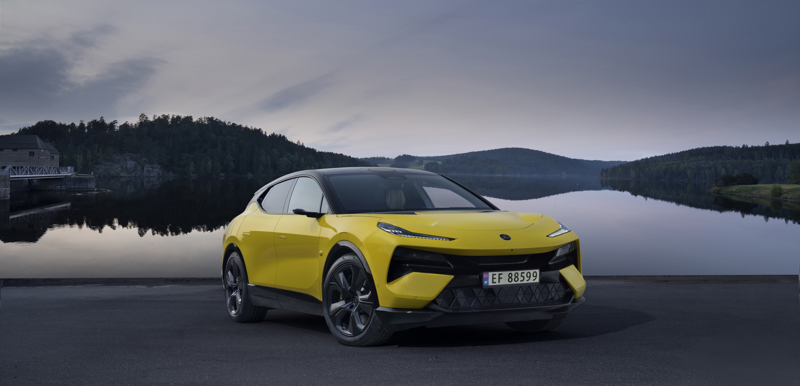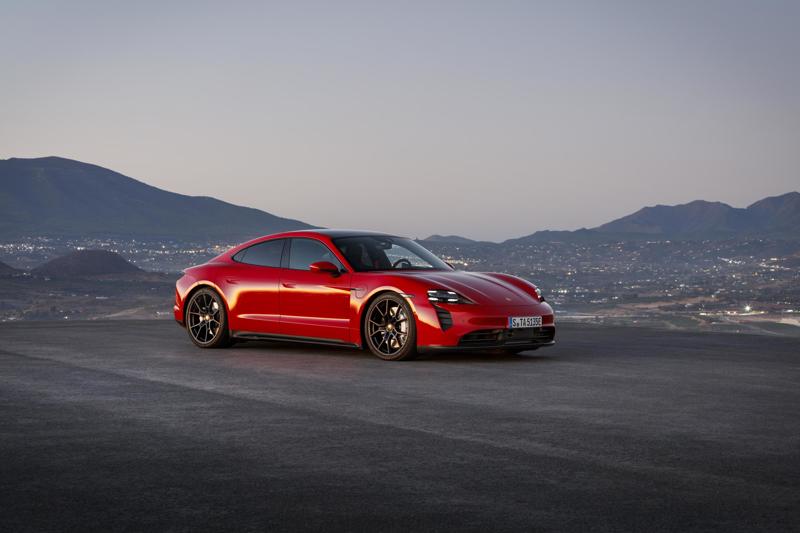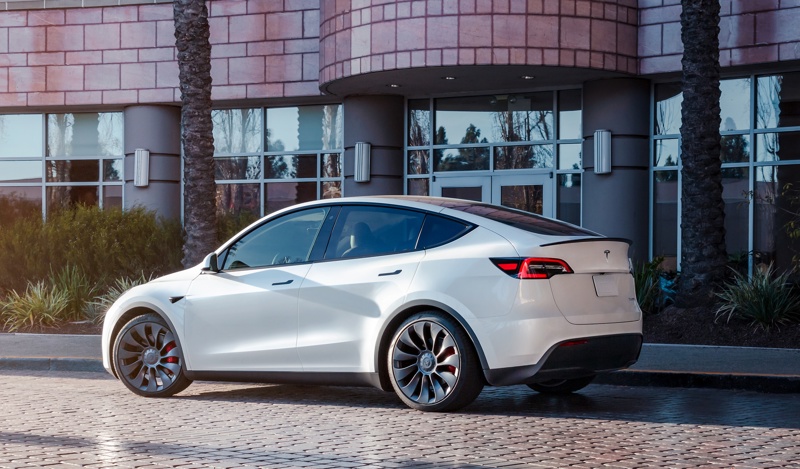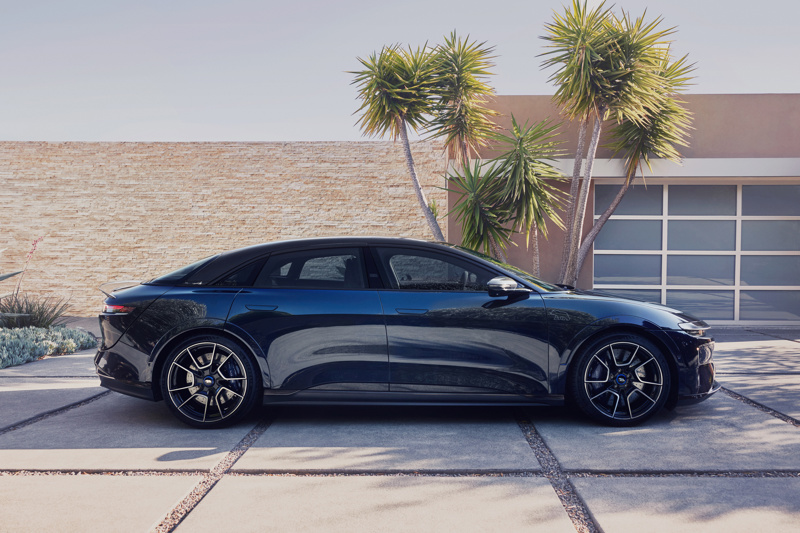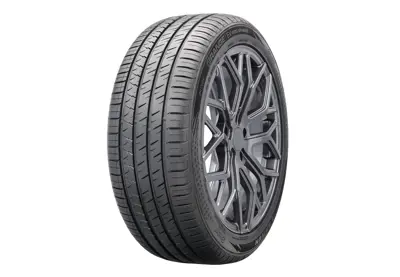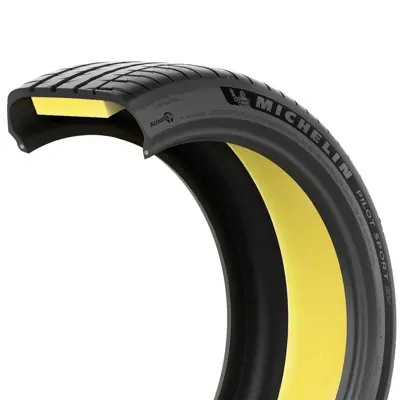Tires & Wheels
Tires are one of the most critical components of a car, as they affect its performance, safety, comfort, and efficiency.
Choosing the right tires and wheels for your car depends on several factors, such as the type of car, the driving conditions, the weather, and your personal preferences. In this article, we will explain the differences between types of tires & wheels, the sizes of tires & wheels, and the special tires & wheels for electric vehicles (EVs).
Lotus Eletre with big wheels
Wheels
Wheels connect the tires to the vehicle and allow them to rotate and move. They are composed of two main elements: the rim and the hub. The rim is the wheel's outer edge that holds the tire in place, while the hub is the center part of the wheel that connects to the axle and brake system. Wheels can have different designs and sizes, depending on the type of car, the driving conditions, and the owner's personal preferences.
Wheel Design
The wheel's design affects a car's appearance, performance, and aerodynamics. Wheel designs include spoke, mesh, star, multi-piece, split-spoke, turbine, and more. Each design has advantages and disadvantages, depending on the style and functionality of the car. For example, spoke wheels are lightweight and allow better airflow and cooling for the brakes, but they are also more fragile and prone to bending or cracking. Mesh wheels are strong and durable, but they are also heavier and harder to clean.
Porsche Taycan with split-spoke wheels
Tesla Model Y with turbine design wheels
Mercedes EQS with 11-spoke design wheels
Wheel Size
The wheel size affects a car's handling, comfort, speed, and energy efficiency, but most of all, it affects the overall design and appearance of your EV. Most manufacturers let buyers choose from several wheel/tire options when ordering a new EV. Typically, they have wheels in different sizes so the buyer can choose if they prefer design over range. Today, EVs are delivered with 16-23" wheels depending on the model. Most EVs have wheels with the same diameter and width on all wheels. A few models have a staggered setup with wider wheels at the rear than in the front. Lucid Air Sapphire is currently the only model with wider wheels in the rear and a larger diameter of 21" in the rear and 20" in the front.
Lucid Air Sapphire with 21\
Tires
There are many types of tires available in the market, each with its own advantages and disadvantages. Some of the most common types are:
All-Season Tires
These are designed to provide a good balance of performance and comfort in various weather conditions and road surfaces. They typically have symmetrical tread patterns and moderate tread depth to offer traction in dry, wet, and light snow conditions. They are suitable for most cars and drivers who do not experience extreme weather or driving situations. However, they may not perform as well as specialized tires in certain conditions, such as heavy snow, ice, or high-speed driving.
Summer Tires
These are designed to provide optimal performance and handling in warm and dry conditions. They usually have asymmetrical tread patterns and shallow tread depth to reduce rolling resistance and improve grip on dry and wet roads. They also have softer rubber compounds that enhance traction and responsiveness at high temperatures. They are ideal for sports cars and drivers who value speed and agility. However, they are not suitable for cold or snowy conditions, as they may lose traction and flexibility.
Winter Tires
These are designed to provide superior performance and safety in cold and snowy conditions. They usually have directional tread patterns and deep tread depth to increase traction and prevent hydroplaning on snow and ice. They also have special rubber compounds that remain flexible and responsive at low temperatures. They are essential for cars and drivers who live in areas with harsh winters or drive on snowy or icy roads frequently. However, they are not suitable for warm or dry conditions, as they may wear out faster and compromise handling and fuel efficiency.
Sizes of Tires
The size of a tire is indicated by a series of numbers and letters on its sidewall. For example, P215/60R16 94T means:
- P: The type of vehicle the tire is designed for (P stands for passenger car)
- 215: The width of the tire in millimeters
- 60: The aspect ratio of the tire, which is the height of the sidewall as a percentage of the width
- R: The type of construction of the tire (R stands for radial)
- 16: The diameter of the wheel in inches
- 94: The load index of the tire, which is the maximum weight it can support
- T: The speed rating of the tire, which is the maximum speed it can sustain
It is important to choose the right size of tires for your car, as it affects its performance, safety, comfort, and efficiency. You should consult your owner's manual or the placard on the driver's side doorjamb to find the recommended tire size for your car. You can also use online tools such as Wheel Size or Tire Size Chart to compare different tire sizes and their effects on your car.
Special Tires for EVs
Electric vehicles (EVs) have some unique characteristics that require special tires. Some of these characteristics are:
- EVs are heavier than conventional cars due to the weight of the battery
- EVs have instant torque and acceleration that can put more stress on the tires
- EVs are quieter than conventional cars, which makes tire noise more noticeable
Therefore, EVs need tires that can:
- Support the extra weight of the vehicle without compromising handling or safety
- Resist wear and tear from frequent acceleration and braking
- Reduce rolling resistance to improve efficiency and range
- Minimize noise to enhance comfort
Some tire manufacturers have developed EV-specific tires that meet these requirements. For example:
Sailun Erange EV
These tires are designed specifically for EVs, using a special rubber compound process called EcoPoint3 that creates lower rolling resistance, improves tire life, and generates great grip. They also have a tread pattern that reduces noise and enhances wet performance. They are suitable for various EV models and sizes.
Goodyear ElectricDrive GT
These tires are adapted from Goodyear's normal tires but tweaked to provide lower rolling resistance, higher load capacity, and reduced noise for EVs. They also have a tread pattern that improves wet and dry performance and a rubber compound that enhances durability. They are suitable for high-performance EVs such as the Tesla Model 3.
Michelin Pilot Sport EV
These tires are derived from Michelin's performance tires but optimized to provide lower rolling resistance, higher load capacity, and reduced noise for EVs. They also have a tread pattern that improves wet and dry performance and a rubber compound that enhances grip and longevity. They are suitable for premium EVs such as the Porsche Taycan.
See also this video for good information about EV-specific tires.
Wheels' Effect on Range
If you want to understand the physics of how different wheels affect consumption and range, see the video below.

